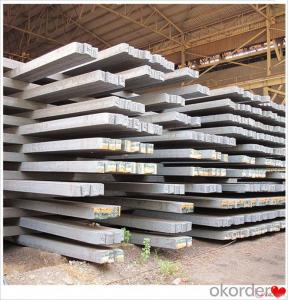Steel Billets Q235 Q235 Q275 Q345 for Fire Door Billet Steel
- Loading Port:
- Dalian
- Payment Terms:
- TT OR LC
- Min Order Qty:
- 100 m.t.
- Supply Capability:
- 50000 m.t./month
OKorder Service Pledge
OKorder Financial Service
You Might Also Like
Steel Billets Q235 Q235 Q275 Q345 for Fire Door Billet Steel
Description
Reference Price:$260/ton Mn 0.3%-0.6%
Rectangular billet continuous casting billet and mainly general carbon steel, low carbon low silicon cold-rolled material, high quality carbon structural steel, high strength low alloy steel, special steel, etc.
The billet is mainly divided into two kinds from the shape:
Slab: cross section width and height of the ratio of the larger, mainly used for rolling plate.
Billet: equal cross section width and height, or a huge difference, mainly used for rolling steel, wire rod. ,
Steel billets have distinct characteristics as compared with already furnished steel bars and products. Billets have a specific grain structure, which enables the metal to be processed more intricately. Steel billets are also known for their malleability and ductility, especially when exposed to varying temperatures during shaping and molding.
Processing of Steel Billet
Steel billets are considered fresh and raw, and they must undergo a series of manufacturing processes before they can be used for various purposes. Billets are made by means of freezing molten liquid, and are later exposed to extremely low temperatures in order to allow the metal to take shape and solidify in chemical structure. The temperature manipulates the metal's physical properties, and tones its strength and durability. The subsequent processes provide the metal's curved mold design so that it can fit the allotted space provided by other machines, which complete the finishing procedures.
Images
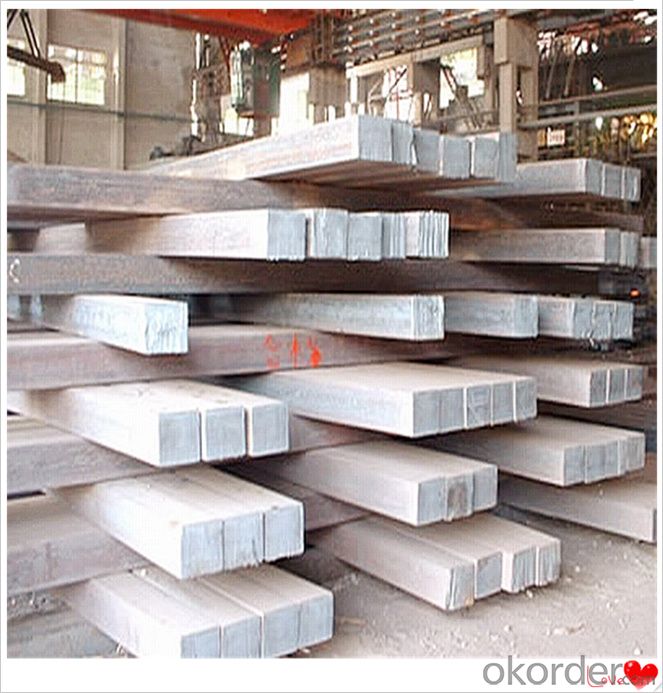
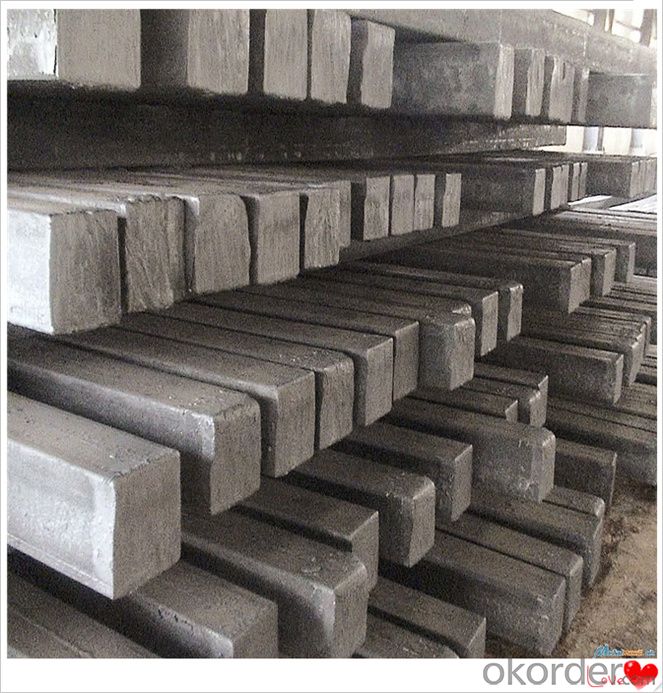
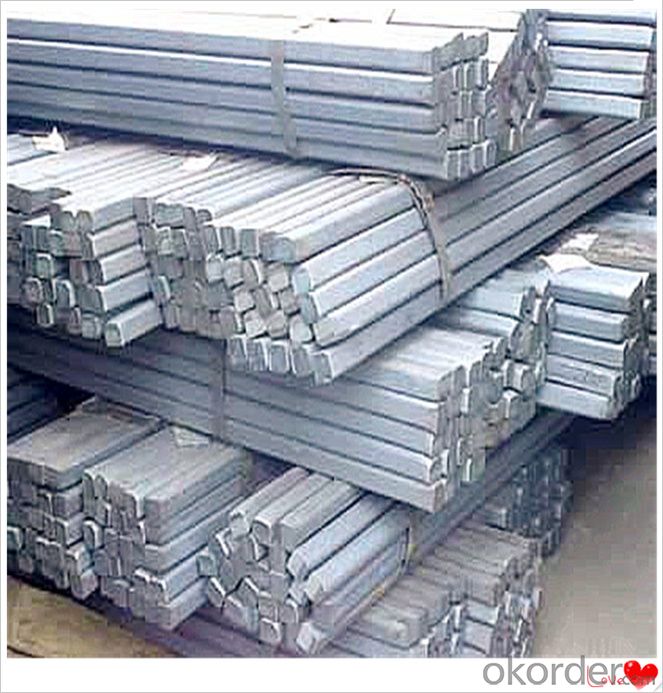
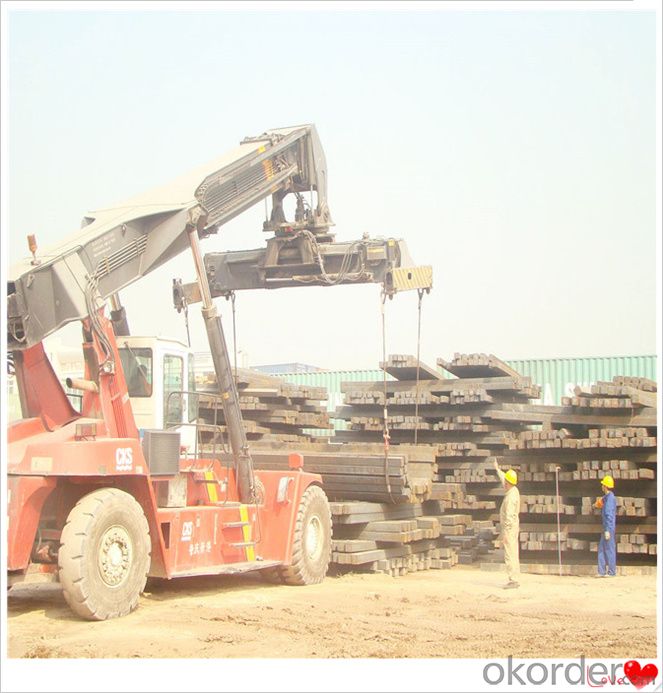
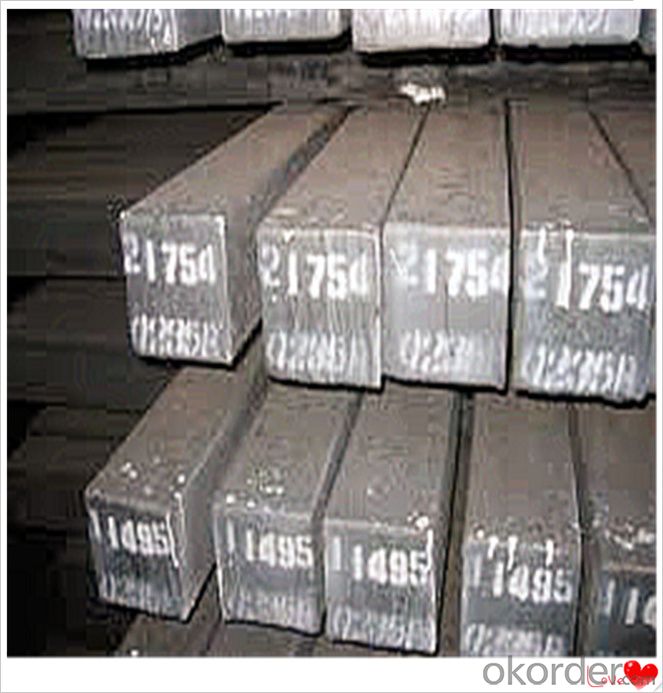
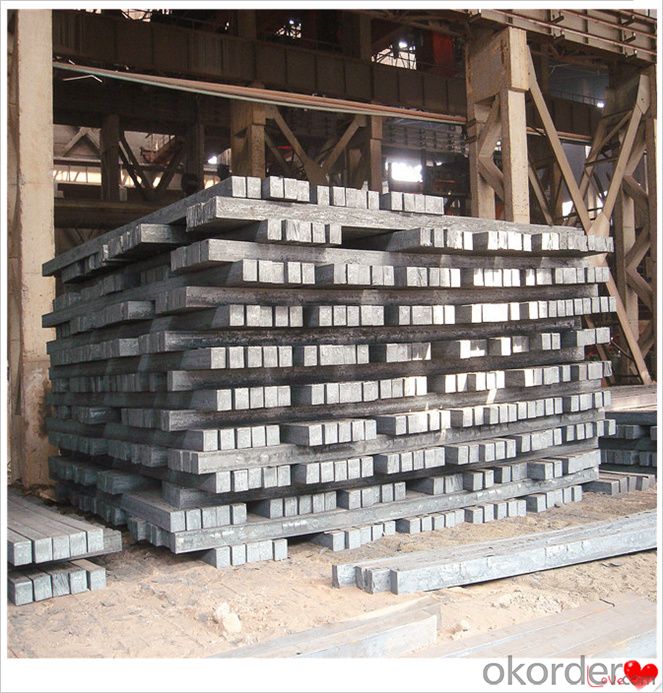
Technical Data
Size:100*100,120*120,150*150,130*130
Mn: 0.3%-0.6%
C: 1%
Cr:0.1%
Packaging
cargo ship or container
usually container price will add 15USD per ton
RFQ
We have organized several common questions for our clients,may help you sincerely:
1) How about your company?
A world class manufacturer & supplier of castings forging in carbon steel and alloy steel,is one of the large-scale professional investment casting production bases in China,consisting of both casting foundry forging and machining factory. Annually more than 8000 tons Precision casting and forging parts are exported to markets in Europe,America and Japan. OEM casting and forging service available according to customer’s requirements.
2) How to guarantee the quality of the products?
We have established the international advanced quality management system,every link from raw material to final product we have strict quality test;We resolutely put an end to unqualified products flowing into the market. At the same time, we will provide necessary follow-up service assurance.
3) How long can we receive the product after purchase?
In the purchase of product within three working days, We will arrange the factory delivery as soon as possible. The pecific time of receiving is related to the state and position of customers.Commonly 7 to 10 working days can be served.
4)Do you have your own QC department?
Yes, we have, our QC department will inspect the goods during the process of mass production and after completion of production.
hot sale!!! steel billets/ mild steel bar/ billet steel
(1): High quality steel with reasonable price.
(2): Wide excellent experiences with after-sale service.
(3): Every process will be checked by responsible QC which insures every product's quality.
(4): Professional packing teams which keep every packing safely.
(5): Trial order can be done in one week.
(6): Samples can be provided as your requirements.
If you are interested in our products, please don't hesitate to contact me.
Your any inquiry will be appreciated and we will offer you a rock-bottom price.
- Q:What are the different surface treatments available for steel billets?
- Steel billets can undergo various surface treatments, each with its own purpose and benefits. Some commonly used treatments include: 1. Hot-dip galvanizing: By immersing steel billets in molten zinc, a protective coating is formed to prevent corrosion. This treatment offers excellent corrosion resistance and durability, making it suitable for outdoor use. 2. Electroplating: Through the application of an electrical current, a layer of metal is deposited onto the surface of steel billets. This treatment enhances the appearance of the steel while providing corrosion and wear resistance. 3. Powder coating: This dry finishing process involves electrostatically applying a fine powder to steel billets, which is then cured under heat. The result is a durable and visually appealing finish that is resistant to chipping, scratching, and fading. 4. Passivation: By chemically treating steel billets, contaminants are removed and a protective oxide layer is formed on the surface. This enhances corrosion resistance and improves appearance. 5. Phosphating: Steel billets can undergo a treatment where a phosphate coating is applied, enhancing corrosion resistance and paint adhesion. This treatment is commonly used as a pre-treatment before painting or powder coating. 6. Shot blasting: This mechanical treatment involves blasting steel billets with small abrasive particles at high velocity. It effectively removes surface contaminants, scales, and rust, resulting in a clean and rough surface suitable for further treatments or coatings. 7. Acid pickling: By chemically treating steel billets, oxide scales, rust, and impurities are removed, leaving behind a clean and smooth surface. This treatment prepares the steel for subsequent processing or coating. These treatments are just a few examples of what can be done to steel billets. The choice of treatment depends on specific requirements, such as corrosion resistance, appearance, and functional properties. Factors like cost, environmental impact, and performance expectations should be considered when selecting the appropriate surface treatment for steel billets.
- Q:What is the average lifespan of a steel billet in a structural application?
- The average lifespan of a steel billet in a structural application can vary depending on various factors such as the quality of the steel, environmental conditions, maintenance practices, and the specific structural application. However, with proper care and maintenance, steel billets can generally have a lifespan of several decades or even longer in structural applications.
- Q:What are the main types of defects found in steel billets?
- The main types of defects found in steel billets are surface defects, internal defects, and segregations. Surface defects refer to any irregularities, cracks, or discontinuities present on the outer surface of the steel billet. These defects can include scale, scratches, pits, and surface cracks. Surface defects can be caused by improper handling during transportation or storage, improper handling during the manufacturing process, or inadequate surface cleaning. Internal defects are flaws or imperfections that occur within the inner structure of the steel billet. These defects can include inclusions, cavities, blowholes, porosity, and non-metallic inclusions. Internal defects can be caused by improper melting and casting processes, improper cooling and solidification, or the presence of impurities in the steel. Segregations refer to the non-uniform distribution of elements or impurities within the steel billet. This can result in areas of the billet having different chemical compositions or mechanical properties. Segregations can be caused by inadequate mixing during the melting process, improper pouring and solidification, or the presence of impurities in the raw materials. Detecting and removing these defects is crucial to ensure the quality and integrity of steel billets. Various non-destructive testing techniques such as visual inspection, ultrasonic testing, magnetic particle testing, and eddy current testing are used to identify and characterize these defects. Once detected, appropriate measures such as grinding, machining, or heat treatment can be employed to remove or mitigate the defects.
- Q:What are the applications of steel billets?
- Steel billets are primarily used as raw material in the production of various steel products such as bars, rods, wire, and seamless tubes. They are also used in the manufacturing of components for automotive, construction, and machinery industries. Additionally, steel billets can be further processed to produce forgings, which are used in heavy machinery and equipment.
- Q:How do steel billets contribute to the mining industry?
- Steel billets are an important component of the mining industry as they play a crucial role in the production of various mining equipment and infrastructure. These billets, which are semi-finished steel products, are used to manufacture a wide range of tools and machinery required for mining activities. One of the primary applications of steel billets in the mining industry is in the production of mining machinery and equipment. These billets are used to create the structural components of heavy machinery such as excavators, bulldozers, and drilling rigs. The strength and durability of steel make it an ideal material choice for these applications, as it can withstand the harsh conditions and heavy loads encountered in mining operations. Steel billets are also utilized in the construction of mining infrastructure. Mining operations require the construction of various structures such as conveyor systems, processing plants, and storage facilities. Steel billets are used to fabricate the structural elements of these buildings, providing the necessary strength and stability to support the mining operations. In addition, steel billets are essential for manufacturing mining tools and equipment. Tools such as drills, hammers, and picks are made from steel billets due to their strength and hardness. These tools are used in various mining processes, including exploration, extraction, and processing of minerals. Furthermore, steel billets contribute to the mining industry by enabling the transportation of extracted minerals. Steel billets are used to manufacture rail tracks and wagons, which are essential for the transportation of minerals from the mining site to processing facilities or ports for export. Overall, steel billets are a vital component of the mining industry, supporting the production of machinery, infrastructure, tools, and transportation systems. Their strength, durability, and versatility make them an indispensable material in the mining sector, helping to drive its growth and efficiency.
- Q:How do steel billets contribute to the manufacturing of construction machinery?
- Steel billets are an essential raw material in the manufacturing of construction machinery as they are the starting point for forging or casting various components. These billets are heated and shaped into desired forms, such as gears, axles, and structural frames, which provide strength, durability, and stability to the machinery. The high-quality steel used in billets ensures that the construction machinery can withstand heavy loads, harsh environments, and demanding construction tasks, making them crucial for the overall performance and safety of these machines.
- Q:How are steel billets used in the manufacturing of pipeline fittings?
- Pipeline fittings rely on steel billets, an essential component in their manufacturing process. These fittings have the purpose of connecting and regulating the movement of fluids or gases within pipelines. To begin the utilization of steel billets for pipeline fittings, the initial step entails selecting durable and high-quality steel. Typically, low carbon steel is chosen for billet production due to its strength and resistance against corrosion. Once the appropriate steel billets are chosen, they undergo heating in a furnace to reach a specific temperature known as the forging temperature. This temperature renders the steel malleable, allowing it to be shaped into various forms. Subsequently, the heated steel billets are placed into a forging press, where they are subjected to immense pressure. This pressure causes the steel billets to deform and acquire the desired shape and size. This process, known as forging, guarantees the strength and integrity of the pipeline fittings. Following the forging process, the steel billets undergo further processing to achieve the final shape required for the pipeline fittings. This may entail additional procedures such as machining, welding, or others, depending on the specific fitting requirements. Once the final shape is achieved, the fittings undergo thorough quality inspections and a variety of tests to ensure compliance with industry standards. These tests comprise dimensional checks, non-destructive testing, pressure testing, and more. Upon successfully passing all necessary tests, the pipeline fittings are ready for installation. These fittings are of paramount importance as they play a crucial role in connecting different sections of the pipeline, enabling the controlled flow of fluids or gases. They provide a secure and leak-free connection, ensuring the safe and efficient operation of the pipeline system. In conclusion, steel billets undergo a series of processes including heating, forging, machining, and testing to manufacture pipeline fittings. These fittings are vital for connecting and regulating fluid or gas flow within pipelines, ensuring the safe and efficient operation of the entire system.
- Q:What are the different types of machining processes used for shaping steel billets?
- There are several different types of machining processes that can be used to shape steel billets. Here are some of the most common ones: 1. Turning: This process involves rotating the billet against a cutting tool, which removes material from the outer surface. It is often used to create cylindrical shapes or to remove excess material from the billet. 2. Milling: In milling, a rotating cutting tool is used to remove material from the surface of the billet. This process can be used to create flat surfaces, slots, or complex shapes. 3. Drilling: Drilling is the process of creating holes in the billet using a rotating cutting tool. It can be done manually or with the help of a drilling machine. 4. Grinding: Grinding is a process that uses an abrasive wheel or belt to remove material from the surface of the billet. It is often used to achieve a smooth and precise finish. 5. Broaching: Broaching involves using a broach, which is a toothed cutting tool, to remove material from the billet. This process is often used to create internal or external splines, keyways, or other special shapes. 6. Sawing: Sawing is a cutting process that uses a saw blade to separate the billet into smaller pieces or to remove excess material. It can be done manually or with the help of a sawing machine. These are just a few examples of the machining processes used for shaping steel billets. Each process has its own advantages and is chosen based on the specific requirements of the final product.
- Q:How are steel billets used in the manufacturing of food processing machinery?
- Steel billets are used in the manufacturing of food processing machinery as they provide the necessary raw material for creating various components and structures. The billets are first heated and then passed through a series of rolling mills to form different shapes and sizes of steel bars, rods, or sheets. These steel products are then used to construct the framework, body, and other parts of food processing machinery. The high strength and durability of steel make it an ideal material for food processing machinery, which often operates under harsh conditions and requires resistance to corrosion, wear, and high temperatures. Steel billets are specifically chosen for their quality and suitability for the intended application. In the construction of food processing machinery, steel billets are used to fabricate key components such as cutting blades, mixing paddles, conveyor belts, and grinding plates. These components are critical for the efficient processing and handling of food products, ensuring consistent quality and safety. Additionally, steel billets are also utilized in the manufacturing of structural supports, frames, and housing for machinery. These structures provide the necessary stability, rigidity, and support to ensure the proper functioning and longevity of food processing equipment. Overall, steel billets play a vital role in the manufacturing of food processing machinery by providing the essential raw material needed to create durable, reliable, and efficient equipment. The quality and characteristics of steel contribute to the performance, safety, and hygiene standards required in the food processing industry.
- Q:What is the role of steel billets in the construction of bridges?
- The construction of bridges relies heavily on steel billets, which are essential for the production of various structural components. These rectangular bars of steel serve as raw material and are transformed into beams, girders, and reinforcement bars. Beams and girders are fabricated from steel billets and are crucial for providing support and load-bearing capacity to bridges. By heating and rolling the billets into the desired shape, these structural elements are created and then welded or bolted together to form the bridge's framework. In addition, steel billets are used to produce reinforcement bars, also known as rebar, which are vital for giving tensile strength to concrete structures like bridge foundations, piers, and abutments. By reinforcing the concrete with steel billets in the form of rebar, bridges can withstand the forces exerted by heavy traffic, wind, and other external factors. There are several advantages to using steel billets in bridge construction. Firstly, steel is known for its outstanding strength and high strength-to-weight ratio, making it an ideal material for bridges. Steel billets can bear heavy loads and provide the necessary structural integrity, ensuring the longevity and durability of the bridge. Furthermore, steel exhibits excellent resistance to corrosion, which is crucial for bridges exposed to harsh weather conditions and environmental factors. Corrosion can weaken a bridge's structure and compromise its safety and longevity. However, by using steel billets that can be coated or galvanized to enhance corrosion resistance, bridges can maintain their structural integrity over a prolonged period. To summarize, steel billets play a vital role in bridge construction by fabricating beams, girders, and rebar. They provide the necessary strength, support, and durability to withstand heavy loads and external forces. Steel billets contribute significantly to the overall safety, longevity, and functionality of bridges, making them an indispensable component in bridge construction.
1. Manufacturer Overview |
|
|---|---|
| Location | |
| Year Established | |
| Annual Output Value | |
| Main Markets | |
| Company Certifications | |
2. Manufacturer Certificates |
|
|---|---|
| a) Certification Name | |
| Range | |
| Reference | |
| Validity Period | |
3. Manufacturer Capability |
|
|---|---|
| a)Trade Capacity | |
| Nearest Port | |
| Export Percentage | |
| No.of Employees in Trade Department | |
| Language Spoken: | |
| b)Factory Information | |
| Factory Size: | |
| No. of Production Lines | |
| Contract Manufacturing | |
| Product Price Range | |
Send your message to us
Steel Billets Q235 Q235 Q275 Q345 for Fire Door Billet Steel
- Loading Port:
- Dalian
- Payment Terms:
- TT OR LC
- Min Order Qty:
- 100 m.t.
- Supply Capability:
- 50000 m.t./month
OKorder Service Pledge
OKorder Financial Service
Similar products
New products
Hot products
Hot Searches
Related keywords
